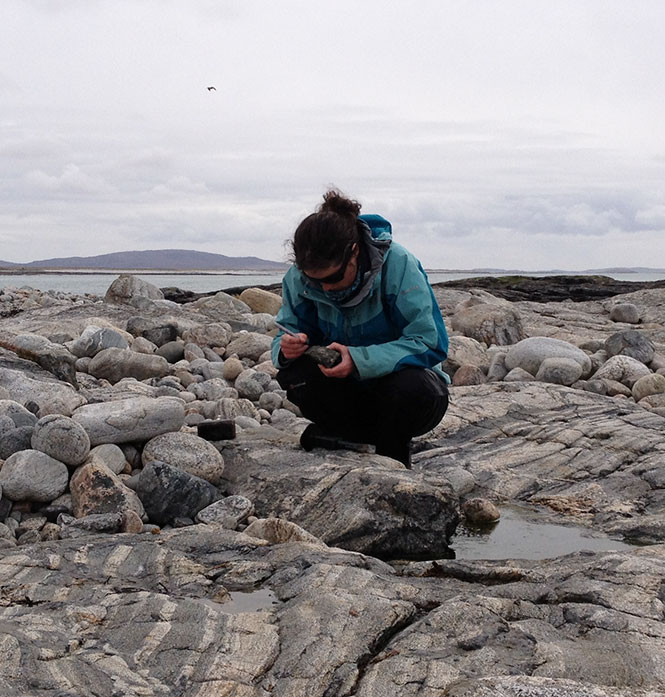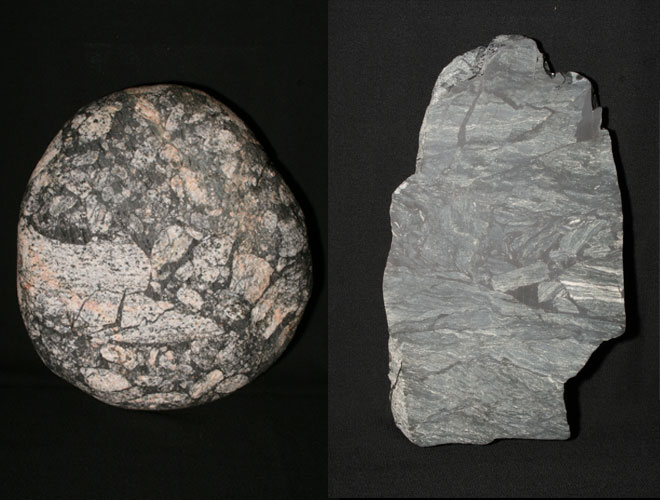Large earthquakes can wreck havoc to peoples’ lives around the world. Unfortunately many of the basic physical processes that occur within the earth’s crust during an earthquake are still not well understood, despite being so important in determining when and where an earthquake may occur.
What is pseudotachylyte?
For my PhD at the University of Leeds I study pseudotachylyte, a black, glassy-looking rock that solidifies in veins from melt produced during an earthquake. Melting occurs due to friction-driven heating as rocks move past each other along a fault surface – this is the same process as rubbing your hands together to warm them up. Pseudotachylytes melt and solidify in a matter of minutes, a very fast timescale compared to most geological processes. This means that they lock in information specific to the time of their formation – the earthquake itself.
I work in the Outer Hebrides Fault Zone in the Western Isles of Scotland. This large and ancient fault is often linked to the collision of the once-separate tectonic plates containing Scotland and England around 450 million years ago. Another theory is that faulting here may have been active over one billion years ago, long before there was life on earth. Since then, erosion of the land above has exposed what was once hidden several kilometres deep into the now-inactive fault zone. This allows us to investigate the deep processes that we cannot observe when earthquakes happen today.


The PhD project
During my fieldwork I collected samples and recorded data on the orientation and location of pseudotachylyte veins across the islands of Lewis, Harris, the Uists and Barra. I use optical and scanning electron microscope (SEM) techniques to look at the chemistry and microstructures of pseudotachylyte veins. These often contain fragments of the surrounding rock, ripped off from the vein walls. The presence of these along with the composition of the melted material can provide useful information about the temperature of the fault during the earthquake, which can rise to well over 1000°C. Meanwhile, the structures seen in the rock around the vein can give important clues to the changing behaviour of the fault over time – for example, whether it perhaps moved very slowly (‘creeping’) before or even after the earthquake – and also as to how the stresses changed during the earthquake itself.
By attempting to understand the range of conditions such as temperature, pressure and stress, we can improve our knowledge of how faults behave and which conditions may help earthquakes to start. This knowledge contributes to a diverse pool of geological and geophysical research which eventually may allow us to predict where earthquakes will occur.

The minerals on display

Two specimens of pseudotachylyte, one of which was collected in South Uist during fieldwork, will be going on display in the Restless Earth gallery at National Museum of Scotland in Spring 2016. This gallery explores the geological processes that constantly shape and reshape the planet.
